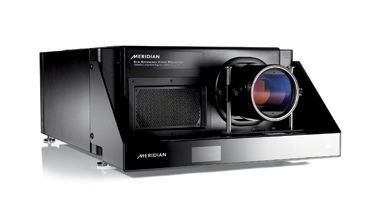Tech Trends '09: Special K Page 2

I'M FOR 4K, YOU'RE FOR 4K, ARE WE ALL FOR 4K?
So, when might one of these mega-megapixel flat-panel TVs make it to your local Best Buy? For that Toshiba cell-based 56-incher, the official answer is sometime in 2010, according to Scott Ramirez, the company's vice president of marketing. And Sony's prototype? "It's just too early to talk about 4K for consumers," says spokesman Greg Belloni, "and we have no products or plans to talk about." (For the record, though, Sony has helped spearhead the professional market with its SXRD 4K projectors, used in select digital movie theaters.)
But even if 4K gear does infiltrate the consumer market, will there be any 4K content to show on them? In one sense, there's plenty of raw 4 out there already: "It isn't as if these resources don't exist in the Hollywood community," says image-quality expert Joe Kane, the video guru behind the Digital Video Essentials calibration-disc series. "A tremendous amount of material is being done as a digital intermediate, so there's a lot of stuff that's 4K" - meaning that studios are digitizing new releases in high-rez and preserving older fare the same way.
Whoa - hold on a second, Joe. Meridian's Marcom needs to play devil's advocate here: "Hollywood is still making relatively little use of 4K because it costs too much, so I doubt we would see 4K for the consumer market for a long time - if ever. Look at D-Cinema [which is used in commercial movie theaters]. It includes a specification for 4K, but almost all of the D-Cinema out there is 2K. And it looks set to stay that way for some time, while 3-D and other features present Hollywood with a stronger way to differentiate the cinema from the home theater and create a greater source of revenue." Toshiba's Scott Ramirez adds that he knows of no plans for 4K software.
If Hollywood does ever turn on the 4K faucet, the bits and bytes could conceivably flow from a medium that you're quite familiar with: Blu-ray Disc. "Blu-ray has the capability for 4K," says Richard Doherty, research director for The Envisioneering Group. "Most Blu-rays going out the door right now are double layer - 50 gigs. At 4K, you'd be able to fit a movie on a disc using the best H.264 compression [a variant of the MPEG-4 codec]."
Marcom agrees with that assertion, in theory. "H.264, to the best of my knowledge, makes it technically possible to put video in this format onto a Blu-ray Disc at 4K resolution and even higher. But there are no consumer players - or even professional players, for that matter - that have the hardware to provide a video output for it. So, it's all rather academic. Still, DisplayPort [a digital display-interface standard] could handle these resolutions and provide us with the connection to a potential display."
What if the 4K Blu-ray thing never happens? And what if Internet speeds remain too slow to make downloading ultra-high-def movies practical? No prob. There are other 4K delivery scenarios. One of them combines the movie-rental model with solid-state memory. Says Joe Kane: "People would actually own, say, a Memory Stick, walk into a store, and find a panel to plug it into. Then you would go do your store shopping and say, 'Oh, I want that movie,' and send it to your Stick. At tens of gigs a second, it wouldn't take long to load the movie - like, seconds. These kinds of scenarios are being offered to help reinvigorate brick-and-mortar places."
WHERE NO K HAS GONE BEFORE
But is even 4K enough to get the job done? Take Baraka, the epic look at nature and civilization - the disc Roger Ebert called "the reason to acquire a Blu-ray player." It was shot in 65mm and transferred to - not 2K, not 4K, but 8K digital. So if you ever want to see Baraka in the Full Monty, 4K just won't cut it. Ditto for such 65mm luminaries as Lawrence of Arabia, Ben-Hur, and 2001: A Space Odyssey.
"I've seen one demonstration of 8K already in Japan," notes Envisioneering's Doherty. "I think people have been biting their tongue over the last year about 8K. They think you have to get 4K going before you can talk about 8K or 16K. But the visual system is capable of it. When you enjoy a good planetarium show, you're essentially enjoying 8 or 16K over that large dome. So we've all seen 4K and better; we just haven't seen it with home-video resolution yet."
And you don't need to have a home theater the size of Radio City Music Hall to enjoy these ultra-deluxe resolutions. Doherty says that 8K resolution can fit onto a 65-inch flat-panel TV, and 16K on an 88-incher.
Now surely you can cough up a few Ks of your own to pay for something like that, no?




























































